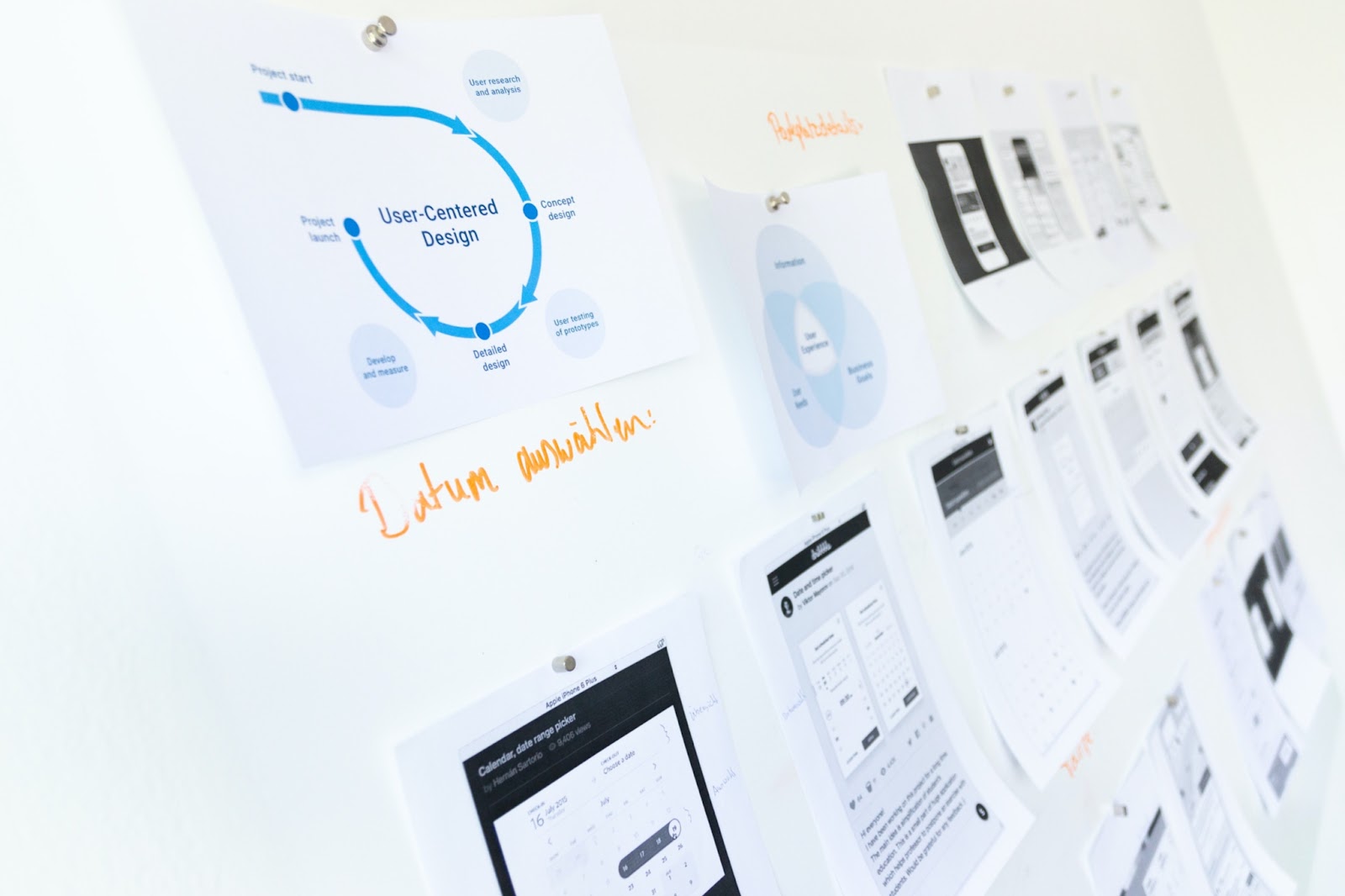-
Digital Marketing
We help you to use your digital potential. For a strong positioning, more visibility and more leads.
Get Growth ready
With the BEE.Transformance model, we bring continuous and profitable growth to your company. A new mindset for your team.
Industries
We transform your challenges into opportunities through the experience we have gained from projects in these industries.
-
HubSpot Services
As a HubSpot Diamond Partner, we help you implement your digital growth strategy with a focus on performance - by implementing and integrating new and existing systems as well as 3rd party apps.
HubSpot Thought Leader
As a HubSpot Diamond Partner with +50 certifications, host of the HubSpot User Group Zurich, HubSpot Trainer and HuSpot User Champions, you have access to in-depth HubSpot expertise.
HubSpot Solutions
The BEE.Theme offers you more creative freedom than any other theme on the market. Whether you're a beginner or a professional, a creative mind or a digital agency - with the BEE theme, you can easily unleash the maximum power for your pages in HubSpot CMS.
-
BEE.Blog
Knowledge around digital marketing, digital sales, technology, data intelligence and employees.
Knowledge Base
Pure knowledge: everything essential concentrated, compact, digitally prepared for you and ready to download.
What is inbound?
The most effective way to successfully combine digital marketing and digital sales.
-
BEE.Team
The BEE.Performers: many different characters - with one thing in common: the fascination for a digital world.
References
More than 100 large and small companies have already started with BEE: to more visibility, more performance, more growth.
Invest
Participate in the growth of BEE and become part of the BEE Growth Story by purchasing Digital Share Tokens.
We're hiring
Become a BEE.Performer! Are you ready for your own transformation?
5 Corporate Website Design Myths you can Completely Forget About
The need for a practical, highly functional and engaging website has been strongly highlighted by recent global events when selling and communicating with customers online proved to be the only way forward.
Even after the pandemic, businesses can expect 61% of consumers to be spending more time online, so facilitating web-based sales should be the top priority for any corporate website design project. But, with 1.8 billion websites online, how does yours fare against the competition? And are you sure it’s doing all the things it needs to be doing to support your business?
In your quest to improve your website or create a new one, you’re likely to encounter a lot of advice –– thanks to low-code/no-code website building platforms like Wix and Squarespace, everyone’s a web design guru these days.
It’s important to distinguish between the facts and the fiction so that you don’t make costly mistakes or unnecessary commitments. To help you sift through the myths, we’d like to anchor this article in the principles of web design:
- Your website must be targeted to your buyer persona.
- Each web page must be clean and simple – your font, colours and imagery convey your message effectively without cluttering the page.
- Easy navigation – finding your way around the website is intuitive and straightforward.
- Quick to scan – typically, the F-shaped pattern should be applied to each page to guide the eye as the visitors scrolls down.
- You have high-quality content that’s well written, designed and produced.
- Pages load quickly – usually, in less than 2 seconds.
- A website should be mobile-friendly, with the pages and menus having a responsive layout suitable for any device.
Now that we have a basic idea of what web design best practices look like, let’s debunk some of over the top myths that have you wondering whether you’re making the right decision.
Myth 1: Out with the old, in with the new! You MUST redesign your website if you want results
Uh. Actually. No, you may not have to.
Designing a website is a big (and expensive –– we’re talking tens of thousands sometimes!) undertaking. So, if you've been told that the only way to improve your sales, generate more leads and make sure your business survives is to redesign your website, you're probably a little worried. Not everyone has a tonne of money to invest in web redesign projects. Most importantly (and what many won’t tell you), a website redesign isn't the magic answer to all your sales and marketing woes.
First, it’s important to establish why you’ve gone down the web redesign path. Below, we take a look at the top catalysts that may be fuelling your desire for a new website and the possible solutions.
-
You need to boost website traffic and generate more leads
Solution: There are so many things that could impact traffic and conversion – and overhauling your existing website may not solve that. A specialist will audit your website and highlight the setbacks, bottlenecks and ineffective features. For example, you may have poor website copy that simply needs a professional touch from a copywriter. Alternatively, user experience (UX) may not be so great, requiring some simple enhancements to the navigation.
-
Your search ranking isn’t great
Solution: Your efforts may simply need to be guided in the right direction, and the implementation of additional marketing tools and strategies may also come in handy. Ideally, you'll acquire the services of an SEO specialist who can come up with a strong content strategy. It’s tough to achieve a high ranking organically, but with the correct plan and implementation, you can shift your website’s position considerably and leverage the content that’s already performing well. -
Your competitor has a fantastic new website, and yours MUST be better
Solution: Just because the competition is redesigning, it doesn't mean you have to. You may, however, need to assess your content marketing strategy, the copy on your website, the impact of your SEO strategy, and the effectiveness of your branding. If you're already winning in all of these areas, then the aesthetics of your competitor's site won't affect you. You'll see a much better return on investment if you maintain a holistic approach to your marketing that includes the functionality and design of your website, as well as all the components that actually make you discoverable, engaging and persuasive. You can make small, continuous improvements that have a high impact, without playing to keep up with the Joneses. -
You just hate it and want to start fresh
Solution: If you have strong feelings of dislike towards your website, you're probably reluctant to send people to it and don't put a lot of effort into your overall strategy. All of this will naturally result in poor outcomes for your website. This is a tough challenge to solve. Admittedly, if your website grinds your gears to such a degree that you don’t actually want to encourage customers to use it, a redesign may be necessary. Our recommendation is to first sit down with a web design specialist and discuss what it is you don’t like in particular. You can then explore options to make enhancements and improvements that don’t require you to scrap the whole thing. You’ll learn to love your website a whole lot more when it’s delivering results. -
There are many technical issues
Solution: Technical issues can affect the performance of your website, having a knock-on effect on traffic and conversion. But, is it always the case that you need a complete redesign? Perhaps some plugins are outdated or not working. Maybe the issue lies with your hosting. Let a specialist assess your website; they may uncover obvious, completely fixable problems or areas where your website is compromised and security measures must be taken. If it turns out that things are not salvageable, sure, a new website may be due. But first, identify the problem – you could save yourself a lot of money.
Myth 2: You should view your website as a marketing tool
Your website is your biggest marketing tool –– said just about every marketing blog circa 2018. And therein lies the problem. While it's true that the management and design decisions of your website are usually undertaken by your marketing department, it's important to remember another essential purpose of your website: to sell. Successful websites happen when marketing and sales are in alignment and close communication.
Your website works around the clock, seven days a week to gather important information, educate, support and warm up your leads. That's why your website should be designed with the input of your sales team – they'll be able to tell you what type of content will answer the FAQs they normally encounter and the essential product or service information that converts leads.
Myth 3: Now that it's up, your work is done
Yes, a lot of work goes into designing or redesigning your website. But that doesn't mean that your work is done once the design has been approved and the site is live. Your website should always be in a perpetual state of evolution to meet industry standards and ensure optimal functioning and competitiveness.
This doesn't mean you have to redesign your website every quarter, however. What’s required is continuous upkeep and observation. Firstly, you'll have to stay on top of the technical aspects, making sure that everything in the backend is functioning as it should be. Secondly, you have to check the overall experience your website provides and whether it's catering to your customers’ needs. Are the visuals, graphics and content still relevant and engaging? Are there any new questions that customers are asking and how can you address them?
In inbound marketing, we often talk about growth-driven, which means regular testing and performance tracking with the aim of changing and updating things to meet the evolving demands of your audience.
Myth 4: Prices on websites are a big NO
Not sure when or how this started, but you'll frequently encounter advice about how listing prices on your website can put customers off before you even get them on the phone. Or worse, prices on your website make it easy for competitors to undercut and steal your customers.
Realistically, you probably already have an idea of what your competitors charge and they have an idea about what you charge. You are, after all, in the same market.
Being open and transparent about your pricing is actually far more likely to generate qualified leads for your business –– leads that have the budget to acquire your services. It's no secret that in order to purchase Y, most people have to pay X. So, don't turn it into a riddle. Be honest and open and get ready to welcome right-fit leads who align with your buyer persona.
Myth 5: You must focus your website entirely on YOU
Imagine we'd made this blog entirely about why you should only ever use BEE for all your web design needs. Unless you'd already made up your mind and were super keen to work with us, you’d probably get tired of the hard sell. Sure, we talk a lot about our services, but you’ll see that our pages typically feature testimonials from our clients and we position our services in the context of what would be useful to you, the potential client.
The truth is, you've probably come to this blog because you're unsure about the next step for your website. You know there are some niggles, and your website isn't performing quite how you'd like. You're also a little untrusting about all the hype when it comes to website design and you want to make sure that whatever investment you make, your money will be going to good use. And that’s why we’ve made a big part of this blog about the goals or challenges you’re looking to address. Make sure your website copy talks directly to your customers; show them that you understand their pain points and help them understand how your product or service can address their needs.

Source: NEW DATA SERVICES by Unsplash
Effective optimization of your web design - with the right partner
We get why these are big concerns, but the good news is, with a little bit of tweaking, there's a lot that can be done to fix things rather than going back to the drawing board. In order for tweaking to be possible, however, it's important to have access to your content management system (CMS). Some agencies or freelancers make it difficult for businesses to amend their websites by charging for every little update and being very reluctant to relinquish control. That's why it's very important to choose a web design partner who will be transparent and reliable from the start.
If corporate website design is on your agenda, you’ve come to the right place. We build effective websites for businesses that are scaling up and looking to increase revenue. There are no secrets or magic website fairy dust to sprinkle, just straight up, high-level inbound best practices used to design, enhance or improve your website.
Whether you’re looking to start from scratch or upgrade your existing website, the BEE.Theme is for you. Click here to download a case study showcasing how we helped a company similar to yours achieve web design success.
Comment
Related Posts

Why Every Website Needs A Strategy
Mattia Suter | 17 Jun 2021
A great website just takes some basic coding, the right template, and a few hours of experimenting with different fonts. Right? Sure... ...if you’re an amateur musician.
reading time: 6min
Zum Blog

Why We Prefer To Build Websites On HubSpot
Giuliano Campaniello | 9 Jun 2022
Where you build your website is one of the most important business decisions you’ll make. The platform you use can impact everything from the user experience (UX) to how ...
reading time: 7min
Zum Blog

Virtual Selling: Close More Deals With LinkedIn
Stephen Maly | 2 Jun 2022
Selling has changed. The virtual landscape has opened many more doors and created opportunities that every business should be keen to leverage. So, before you get ...
reading time: 6min
Zum Blog
